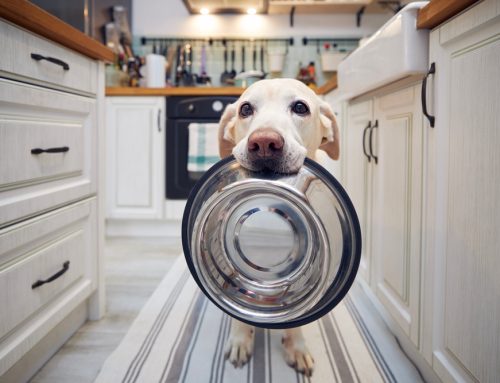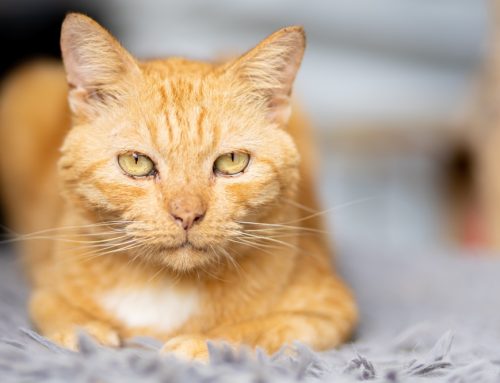As the saying goes, the eyes are the window to the soul, and you can likely attest to the soulful look in your pet’s eyes. Eye diseases, however, can diminish your pet’s ability to see, negatively impacting your four-legged friend’s safety in the process. From mild irritations to serious diseases, understanding these common eye issues in pets can help owners recognize signs early and seek appropriate veterinary care. Our Twin Maples Veterinary Hospital team discusses the most prevalent eye diseases that can affect your furry companion.
Pet eye diseases
Many diseases can affect pets’ eyes, resulting in various signs. Eye diseases can be congenital or genetic, while viruses or infections can also cause problems. The following are pets’ eye conditions our veterinary team frequently encounters:
- Conjunctivitis (pink eye) — Conjunctivitis is a common eye condition that primarily affects cats. This condition is characterized by inflammation of the conjunctiva, the thin membrane covering the inner surface of the eyelids and the whites of the eyes. Conjunctivitis signs include redness, swelling, discharge, and squinting. Allergies, infections, foreign objects, or other irritants can also cause conjunctivitis.
- Corneal ulcers — Corneal ulcers occur when the cornea’s outer layer is damaged or compromised. Common causes include trauma, foreign objects, infections, and tear production abnormalities. Corneal ulcer signs include squinting, excessive tearing, redness, cloudiness, and sensitivity to light. Corneal ulcers require prompt veterinary attention to prevent complications such as infection or vision loss.
- Glaucoma — Glaucoma is a progressive eye condition characterized by increased eye pressure. If left untreated, this disease can damage the optic nerve and lead to vision loss. Glaucoma is primarily diagnosed in older dogs. Glaucoma signs include redness, cloudiness, enlarged pupils, excessive tearing, and behavior changes. Certain dog breeds, including cocker spaniels, poodles, and beagles, are predisposed to glaucoma.
- Cataracts — Cataracts are another condition that impacts primarily older dogs. Cataracts are characterized by the clouding of the eye’s lens, leading to vision impairment. Diabetes, genetics, and certain medications may increase a pet’s cataract risk. Cataract signs include cloudy or opaque eyes, difficulty navigating familiar surroundings, and behavior changes.
- Cherry eye — Cherry eye, or prolapse of the third eyelid gland, occurs when the gland located in the third eyelid protrudes and becomes visible as a red mass in the corner of the eye. This condition is common in certain breeds such as bulldogs, cocker spaniels, and beagles. While not typically painful, cherry eye can lead to irritation, dryness, and secondary infections if left untreated.
- Entropion and ectropion — Entropion is a condition that causes the eyelid to roll inward and the eyelashes to rub against the eye’s surface. This condition leads to irritation and potential corneal damage. Ectropion, conversely, is characterized by an outward rolling of the eyelid, resulting in inner eyelid exposure and increased infection susceptibility. Certain breeds with facial folds, such as basset hounds and bulldogs, are predisposed to these conditions.
- Dry eye (keratoconjunctivitis sicca) — Dry eye results when tear production is insufficient or tear composition is abnormal, leading to cornea and conjunctiva dryness, irritation, and inflammation. This condition’s signs include redness, discharge, squinting, and corneal thickening.
Treatment for these eye conditions varies but may include eye drops, medications, and corrective surgeries. Eye diseases require urgent treatment to prevent your pet’s vision from becoming limited or completely lost.
Eye condition signs in pets
Do you know what to look for regarding your pet’s ocular health? Check your pet’s eyes often and watch for the following problem signs:
- Eye redness
- Squinting
- Scratching or rubbing the eyes
- Unusual eye discharge
- Eye cloudiness
- Disorientation or difficulty finding their way around the home
If you notice any of these signs, our Twin Maple Veterinary Hospital team should examine your pet. Eye problems can quickly worsen without prompt treatment.
Diagnosing eye diseases in pets

Our team will examine your pet to rule out any underlying medical issues that cause eye issues. Using an ophthalmoscope, we will examine your pet’s eyes and perform additional diagnostic testing, which may include a Schirmer tear test to check for dry eye, tonometry to measure eye pressure, slit lamp biomicroscopy to evaluate the lens, and fluorescein stain to look for corneal tears or breaks. Additional testing may be necessary to address more severe eye diseases or conditions in pets.
Early detection and prompt treatment are essential for managing pets’ eye diseases. By staying vigilant and proactive about your pet’s eye health, you can help ensure a lifetime of clear vision and happiness for your furry friend.
If you notice any changes in your pet’s eyes or behavior, consult our Twin Maples Veterinary Hospital team for an eye exam and effective treatment options.









Leave A Comment